Traditional Outfits For Men. It’s important to preserve your country’s heritage. Apart from food and history, clothes are another way to express it.
For one, national costumes represent cultures, which help make each country unique from the other. And despite the outfits coming from different parts of the world, they share one goal: to value one’s culture.
Clothes are more than just about style and protection. In ways you can’t imagine, they signify one’s identity and descent. Over the years, various communities have used this medium to celebrate milestones.
What is a traditional outfit?
Traditional outfit usually refers to the “official dress code” of a country. Each style is exclusive to a certain nationality. But people of a particular country can wear that of another, provided they do it with respect.
For instance, an American can wear a Barong Tagalog (Philippines) when attending special events like weddings. And the Polo Barong (shirt) gives you the leeway to experiment as it comes in different colors and cuts.
Traditional Outfit vs. Modern Clothing
Both traditional and modern clothing are worn to express one’s personal style. However, traditional outfits are more appropriate for cultural celebrations and festivals. And they have the power to help you express nationalism.
Today, millennials, Gen Z, and even older men tend to wear more modern outfits. One reason is that we live in a technologically advanced society – a place where everyone might judge you. And while national costumes stay in vogue, some don’t really appreciate the aesthetics that they have.
But that catch is that designers now try to modernize some traditional outfits. For instance, the aboriginal clothing of Kenya can now be seen in fashion shows. It’s called “modern African wear,” which sports the signature prints of African national dress. Similarly, the African Kitenge Designs are trending all over the world these days because of their vibrant colors and styles
When To Wear Traditional Clothes?
Wearing national costumes is a great way to express your love for your country. People usually sport them to show respect to their culture. Other than that, some use the opportunity to try them on for their ethnic dances, school projects, and photoshoots.
If you’re going to do it, make sure to wear the costume respectfully to avoid misinterpretation. Remember that each traditional clothing means a lot to their origin.
When confused, it’s better to wear your country’s national dress instead of borrowing a style from another.
Tips On Wearing Traditional Outfits
- Choose Your Aesthetic. Men look their best in certain outfits. If you want to try another country’s national costume, that’s fine. For instance, some Americans don Barong Tagalog (Philippines) during special events. Take it from Darren Criss, who wore one to his wedding. Not only does the barong’s fit suit his body type, but it’s stylish as well.
- Check The Fit. Even for outfits that are supposed to be baggy, you have to consider the fit. Make sure that you’ll still be comfy in it, especially when you walk. Consult the tailor if you must!
- Accessorize To Stand Out. Experiment with the latest trends and fads in fashion. But don’t go overboard by overdoing it. Remember that the hint of respect is paramount. That said, let the outfit be the focus. Here’s a list of Types of Jackets for Men that you can use for layering.
- Wear It With Pride. Don every outfit with confidence and not arrogance.
What To Avoid
- Wearing It For Fun. First off, make sure you’re doing it with pride otherwise, it’s pointless. Never do it for fun. And even it’s just for the sake of experience, remember to live by the standard style rules.
- Wrong Time And Place. Don’t wear a traditional whenever and wherever you want. Imagine someone in Mongolian Deel at the beach in broad daylight. Not that it’s wrong — but it’s cliche. For one, the outfit is made for colder regions.
- Styling It On Your Own. Follow how the natives do it. Failure to do so may result in a wardrobe malfunction. It may also send a different meaning — disrespect to a specific culture or ethnicity.
Where To Buy
You have myriad options here. The best move you can make is to consult the best designers in your country. For instance, I live in the Philippines. The best Barong Tagalog designs here are made by Francis Libiran and Albert Andrada. But the thing is, it’s not that easy to gain access to those people.
Also, expect that designer brands are more expensive. But the price isn’t always equal to quality. So if you are on a tight budget, go to the nearest tailor shops. They also have rental options you can avail of.
If you truly want to buy a country’s traditional outfit then the best way is to travel there and explore their local markets, not the big brands. These markets are full of surprises and traditional items that you can get at the cheapest prices.
Be picky with the cut, and remember that fit is king! Lastly, don’t overlook comfort while being too caught up with style.
Traditional Outfits For Men
Here are 30 of our favorite picks that we chose after going through the traditional outfits and national dresses of all countries:
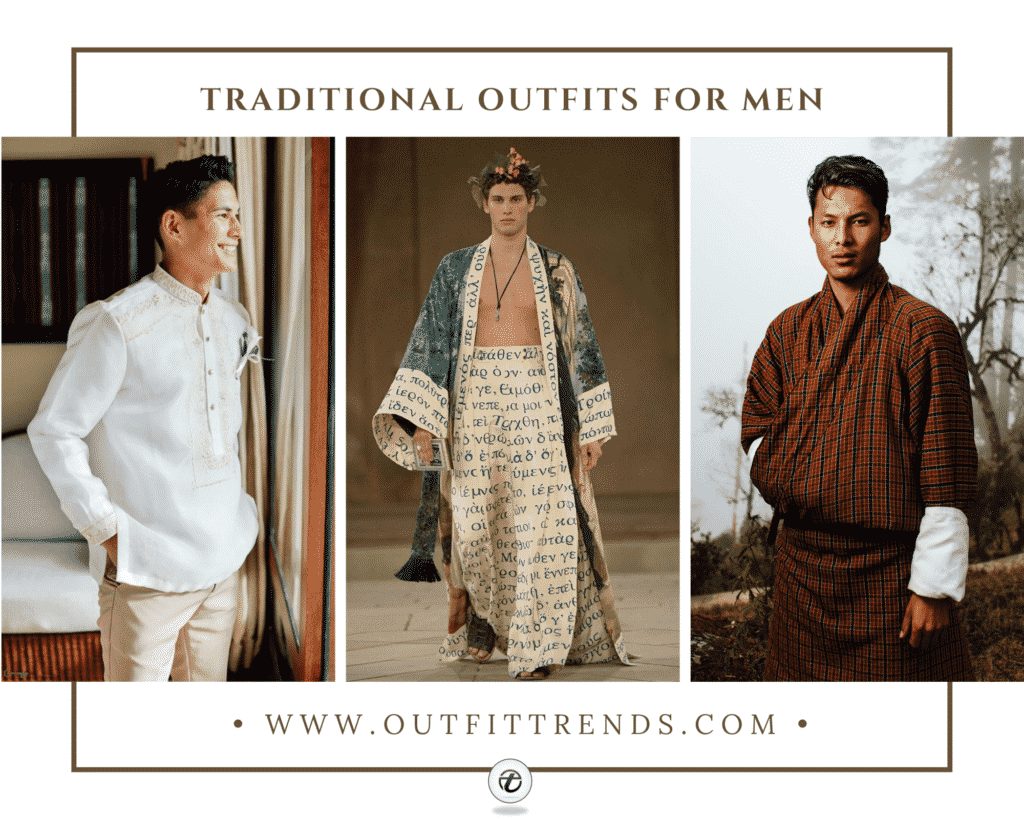
↓ 30 – Croatia
The country’s traditional dress shows the blue and white lacework along with other bright colors.
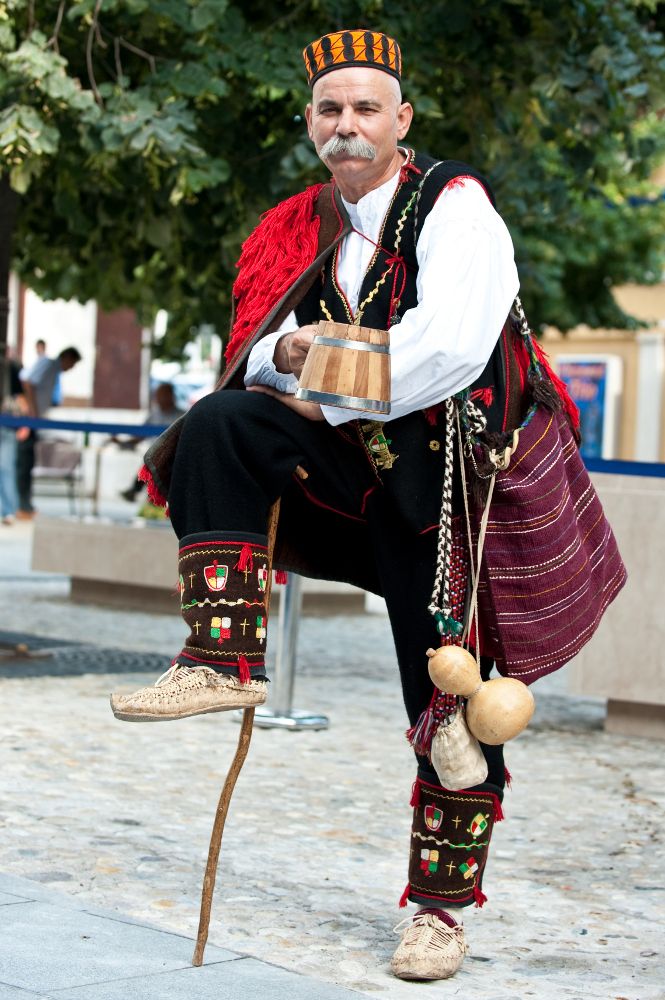
↓ 29 – United Arab Emirates
People in UAE wear Emirati garments to pay respect to their culture. Men wear kandura, a long white woven cloak with ghutra and agal. Here are some more Arab men’s clothing trends for you to explore.
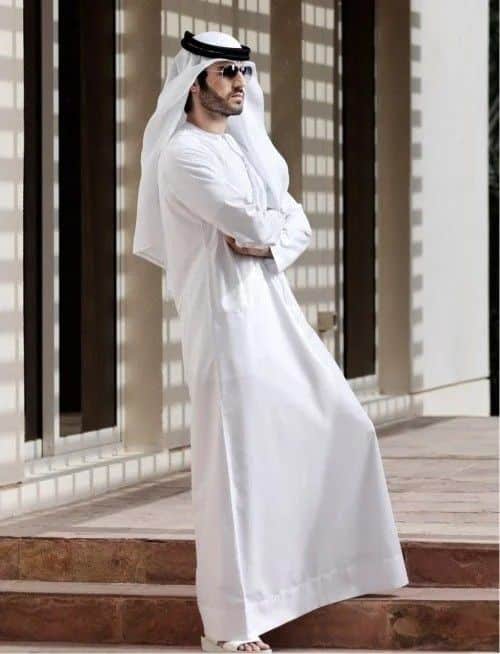
↓ 28 – Barong Tagalog
This is the national dress of men in the Philippines. Some of the best barong designs are made by Francis Libiran. Filipinos wear this at formal gatherings like Christenings, weddings. And celebrities love to sport such costumes when attending premieres, balls, and galas. Apart from Pinoys, foreigners like to don the attire as well.
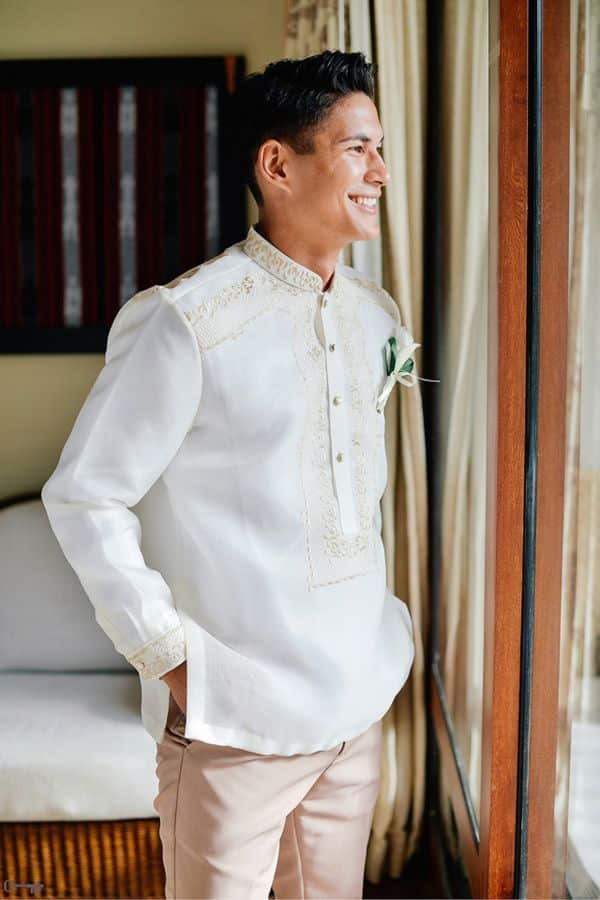
↓ 27 – Korean Hanbok
Yes, you’re seeing it right! This is what we usually see in K-dramas. The hanbok or Korean clothing is Korea’s traditional dress. For men, the version of hanbok is comprised of a longer top with loose-fitting pants. It consists of baji (pants, trousers), jeogori (basic upper garment), baeja (traditional vest), jokki (vest), and durumagi (overcoat).
Asian fashion and style has always been on a different level which is why I recommend that you go through these Asian Beard Styles.
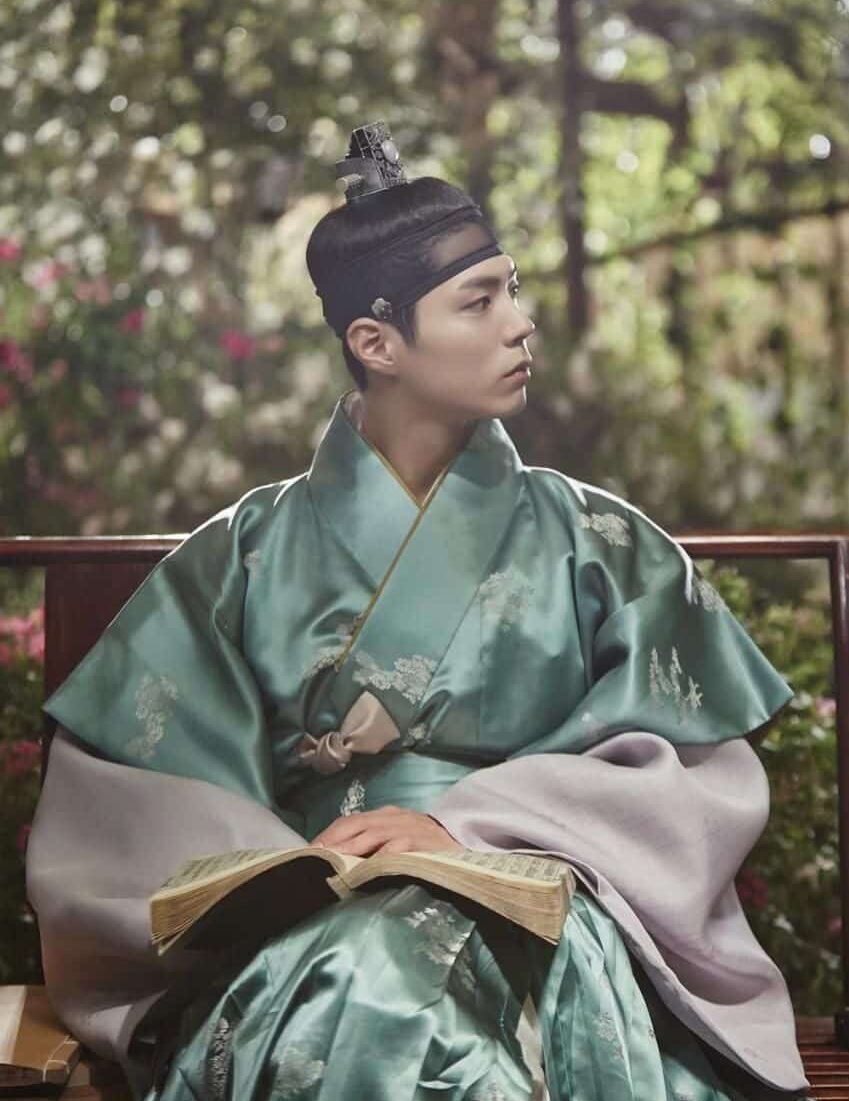
↓ 26 – Mexican Mariachi
When it comes to traditional clothing, Mexico has a lot of entries. For one, the most popular is the Charro suit with a sombrero. Mariachi bands often wear them in the present day. The suit is comprised of an embroidered jacket, teamed up with pants and a cotton shirt.

↓ 25 – Lederhosen of Germany
This clothing is often paired with suspenders. The working-class men once wore leather shorts. Today, people in Austria and Bavaria use them for festivals and occasions in places.
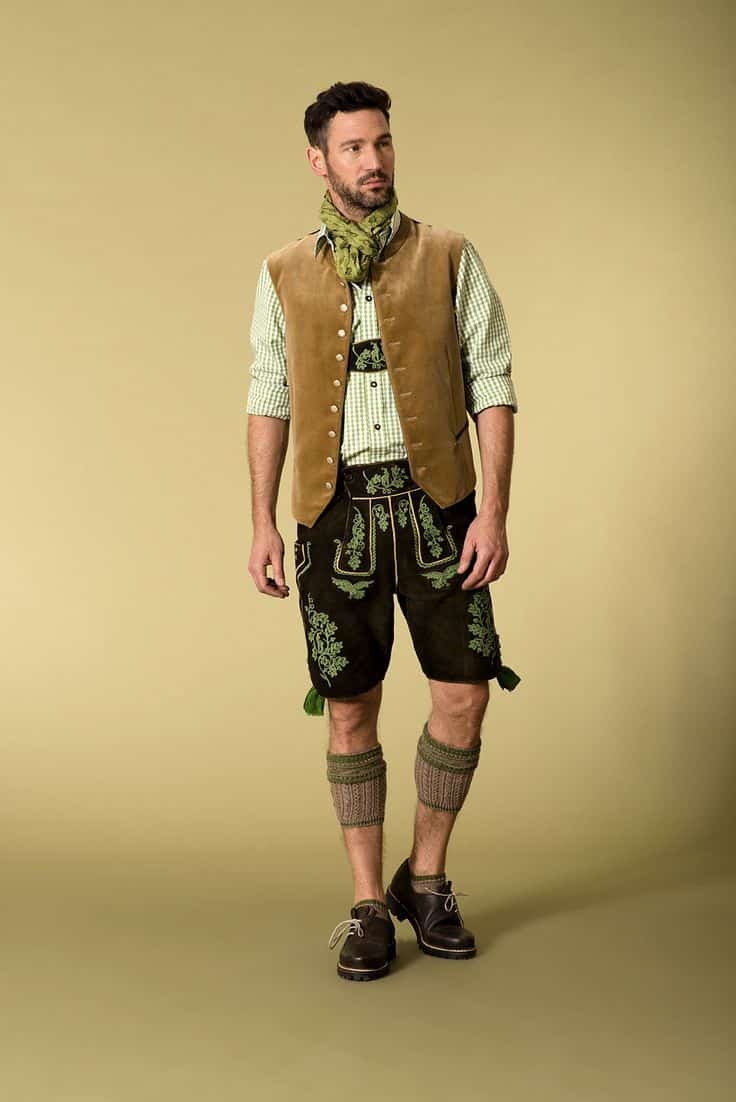
↓ 23 – Greek Men Fustanella
This is the national costume for men in Greece. It is a pleated skirt with a white shirt. They come with the vraka, a white shirt paired with loose trousers.
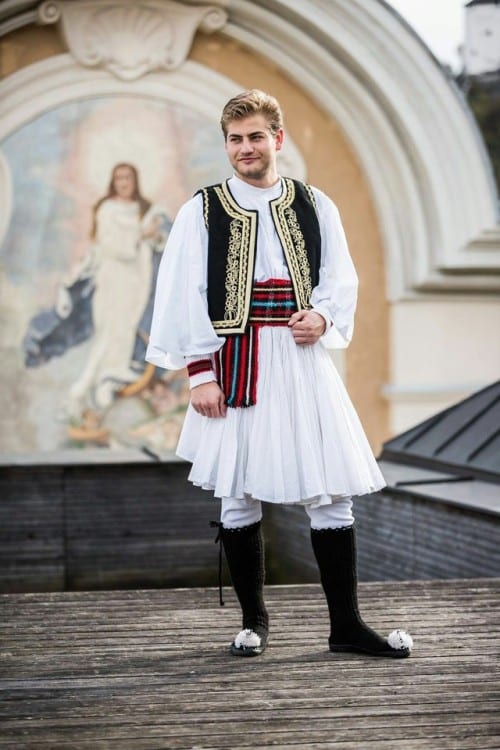
↓ 22 – Romanian Clothing
Romanian clothing has a historical touch in it. One thing you notice is that men wear a belted chemise over their trousers.
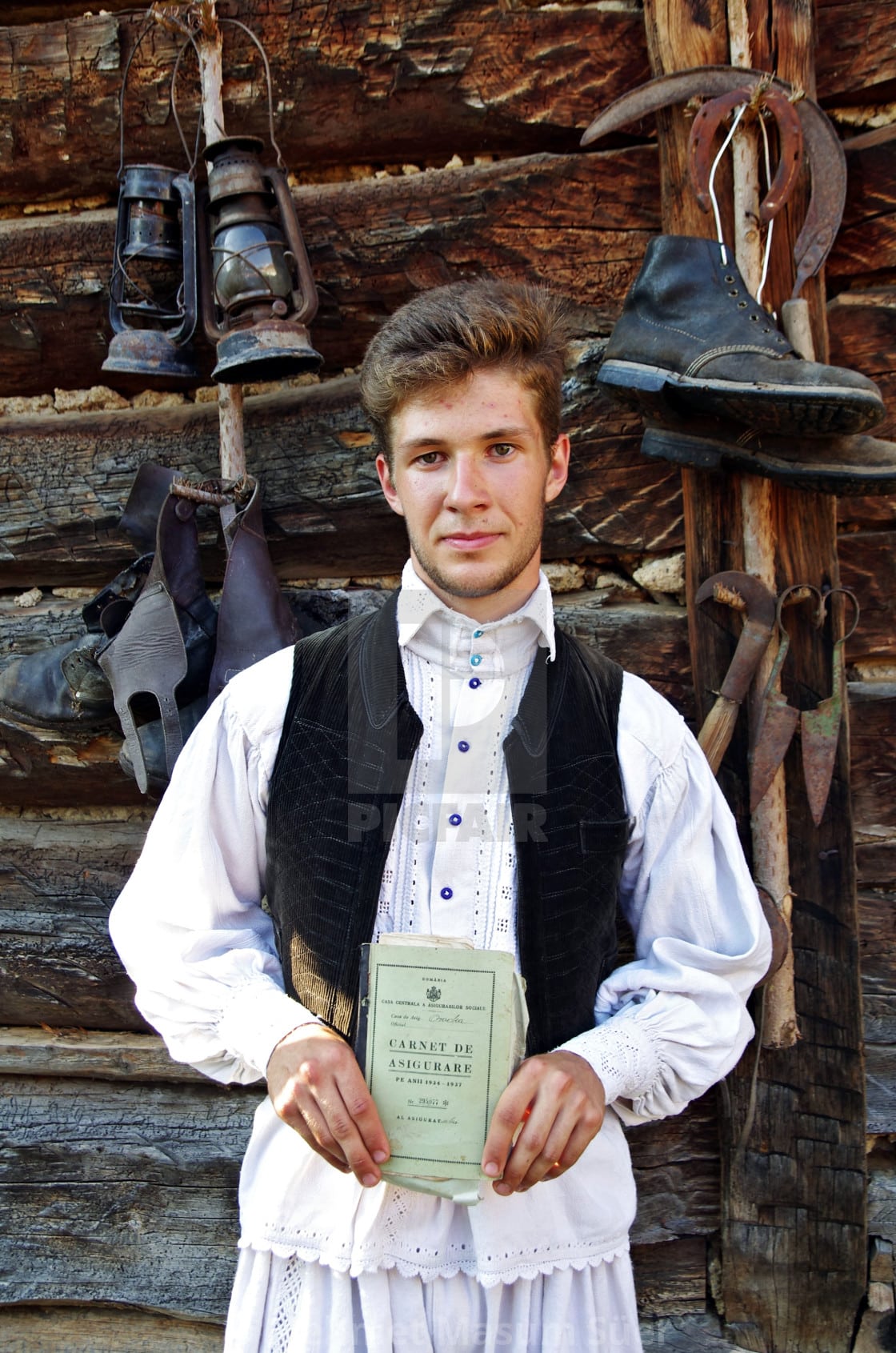
via
↓ 21 – Fashion In Finland
Finnish costume for men is comprised of knee-length trousers, shirt, vest, and long socks. The design was first seen in the 1500s and has gone through minor changes over the years.
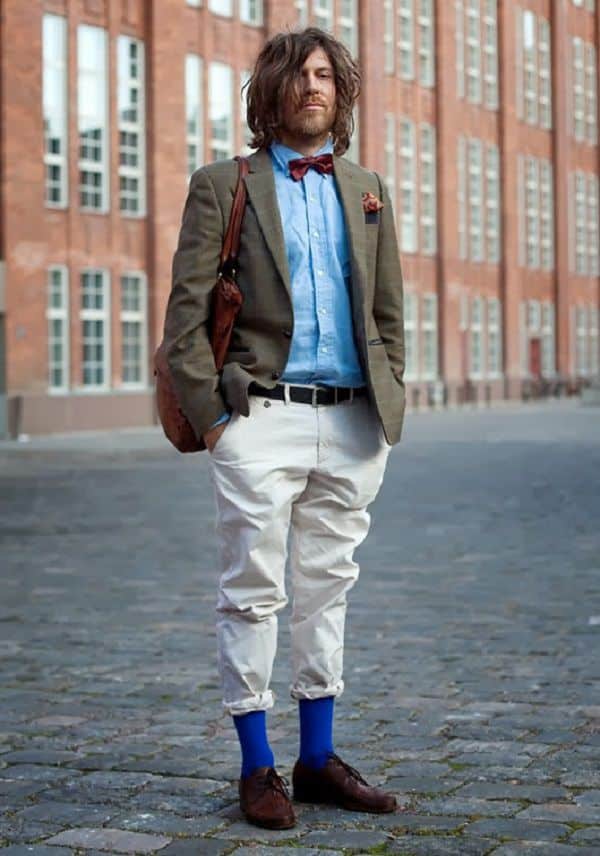
↓ 20 – Russian Style
Their national costumes are made for both style and function. For one, they are loose to allow you to move around freely.
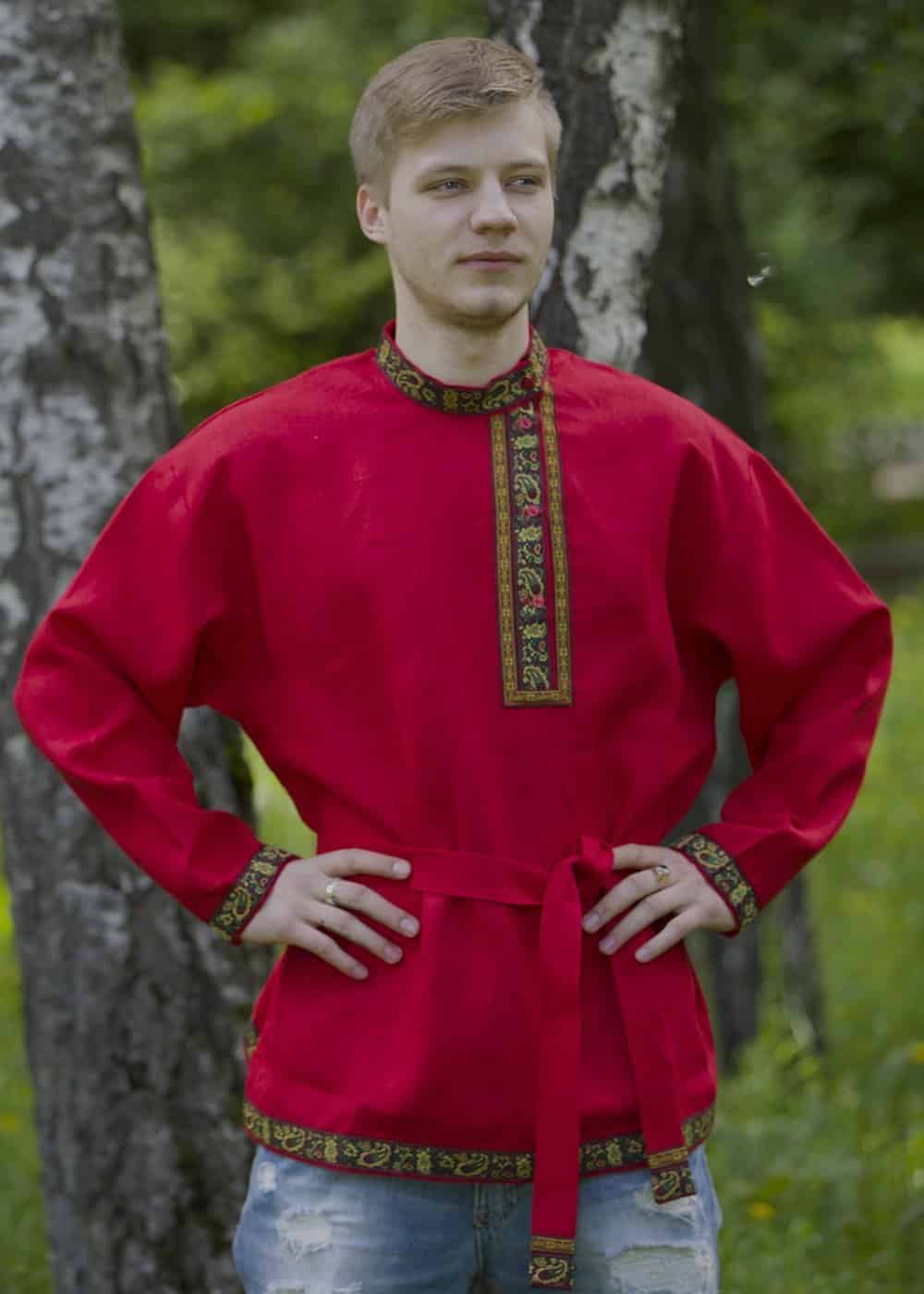
↓ 19 – Scottish Outfit
One of the clothing’s defining features is the knee-length pleated kilt. It is usually made of tartan, a special fabric of a particular clan. This comes with a sporran, a furry pouch around the man’s waist. Knee socks are also part of the ensemble.
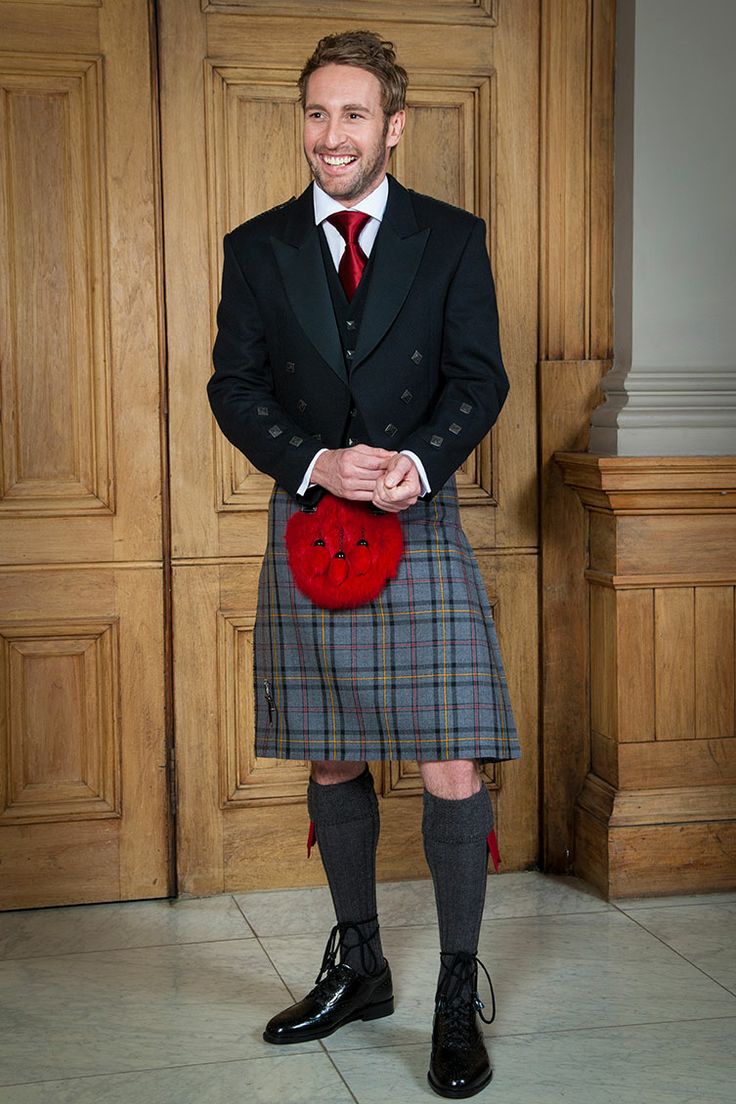
↓ 18 – Attire In Uzbekistan
In this country, men’s costume consists of a long, loose robe, called a chapan, styled with an ornamented braid.

↓ 17 – Moroccan Djellaba
Both men and women wear this costume. You can often Japanese nationals wear this on formal occasions. It has a long undergarment called nagajuban, an obi (sash), an obiage that holds the obi up, baggy sleeves, and a bright overdress.
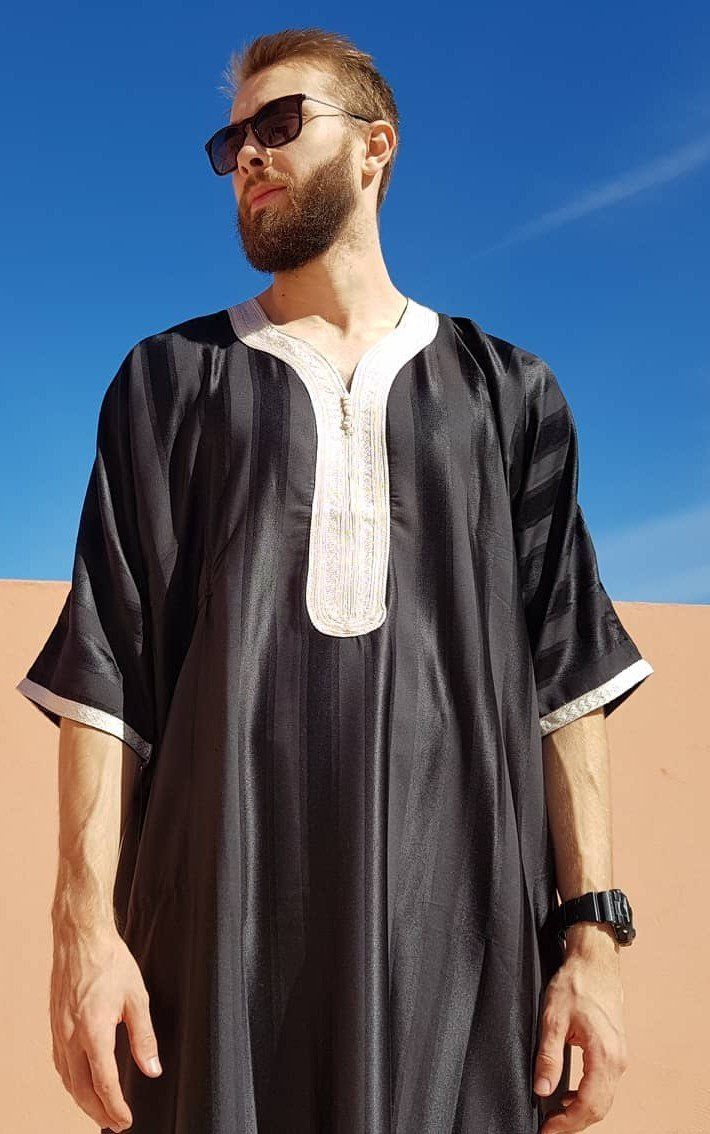
↓ 16 – Japanese Kimono
Both men and women wear this costume. You can often Japanese nationals wear this on formal occasions. It has a long undergarment called nagajuban, an obi (sash), an obiage that holds the obi up, baggy sleeves, and a bright overdress.
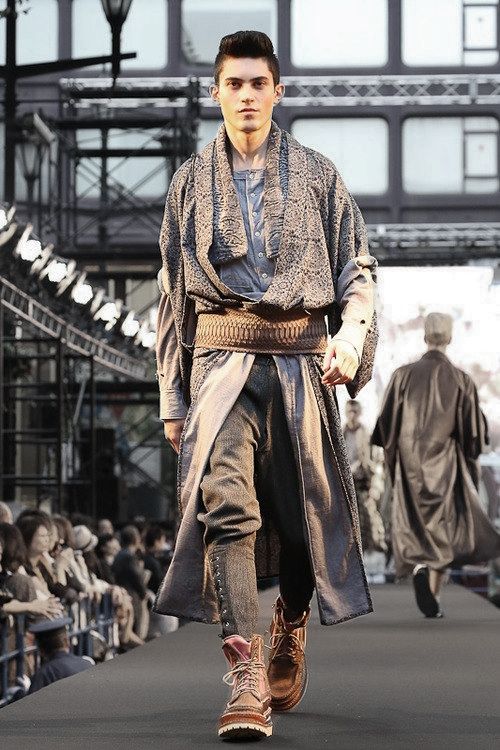
↓ 15 – Norweigian Bunad
This is for both men and women. It is usually made of wool. Men’s pants are also made of the same fabric but pressed and not woven. Wear this over your cotton shirt.
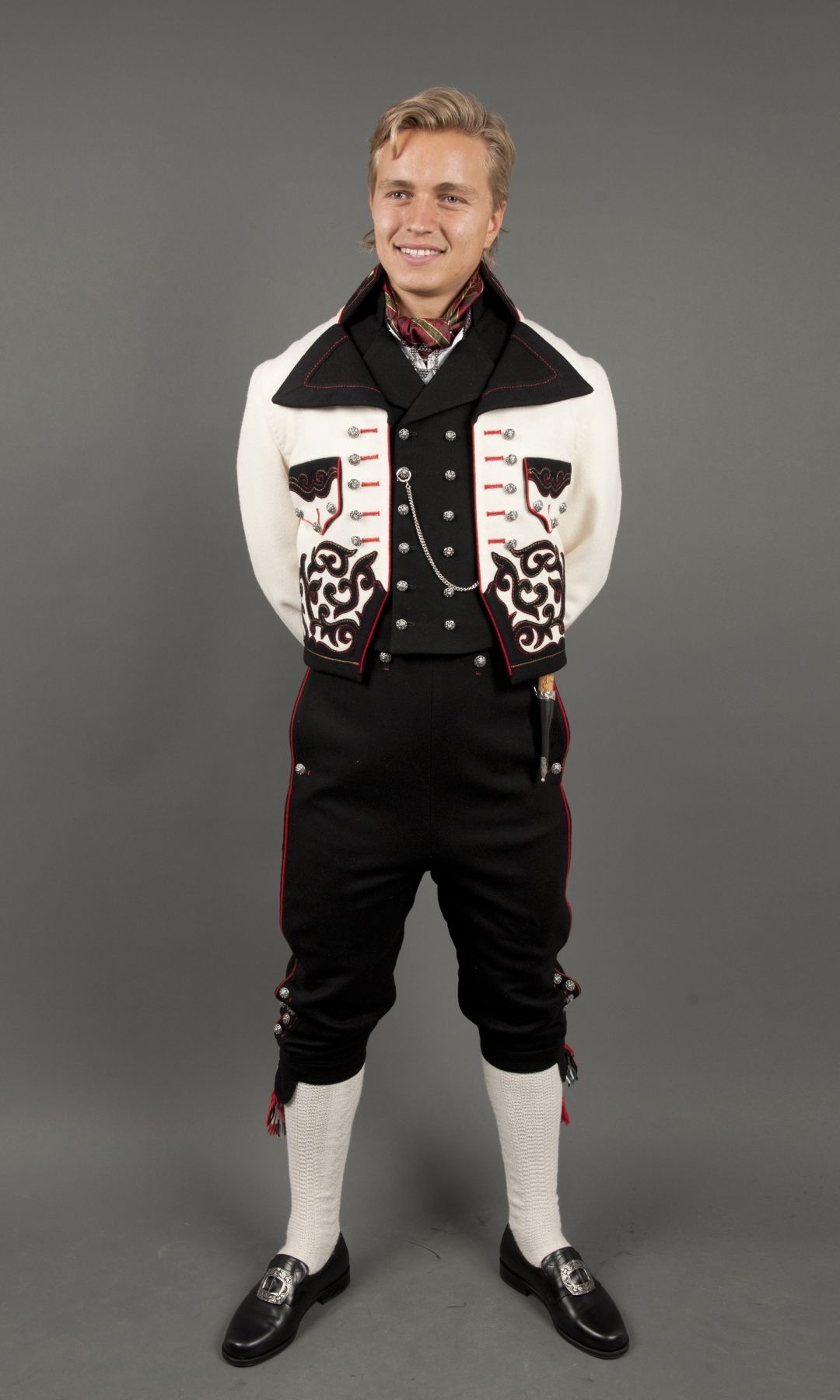
↓ 14 – The Sari
This is also spelled as “saree” and is mainly worn by women. Men wear these garments in Pakistan, India, Sri Lanka, Bangladesh, and Nepal. Interesting fact: it can be an heirloom passed through generations. Traditional designs have a single piece of unstitched fabric. But today, some saris come in modern materials like cotton, silk, and even synthetic fiber.
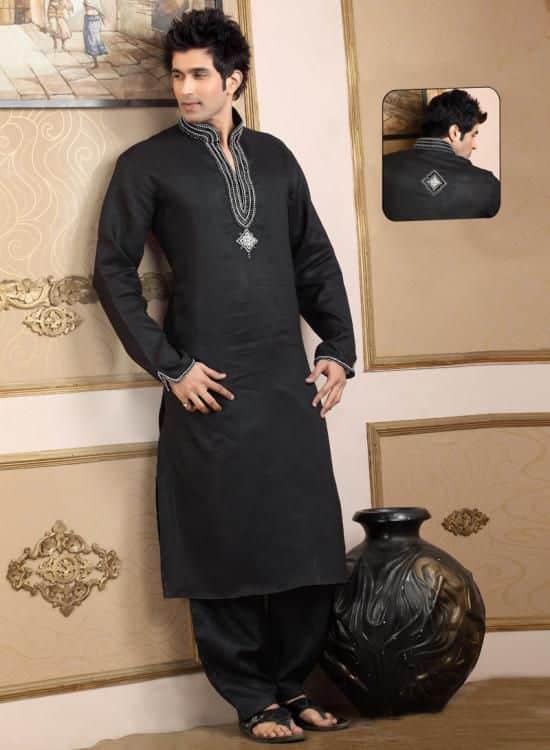
↓ 13 – Agbada Of Nigeria
Men in West and North Africa wear this flowing wide-sleeved robe. The term “agbada” came from the Yoruba language. The outfit is ornamented with embroidery. Men wear it on special occasions and religious ceremonies. Most agbadas are made from the hand-woven cloth also-oke from Nigeria.
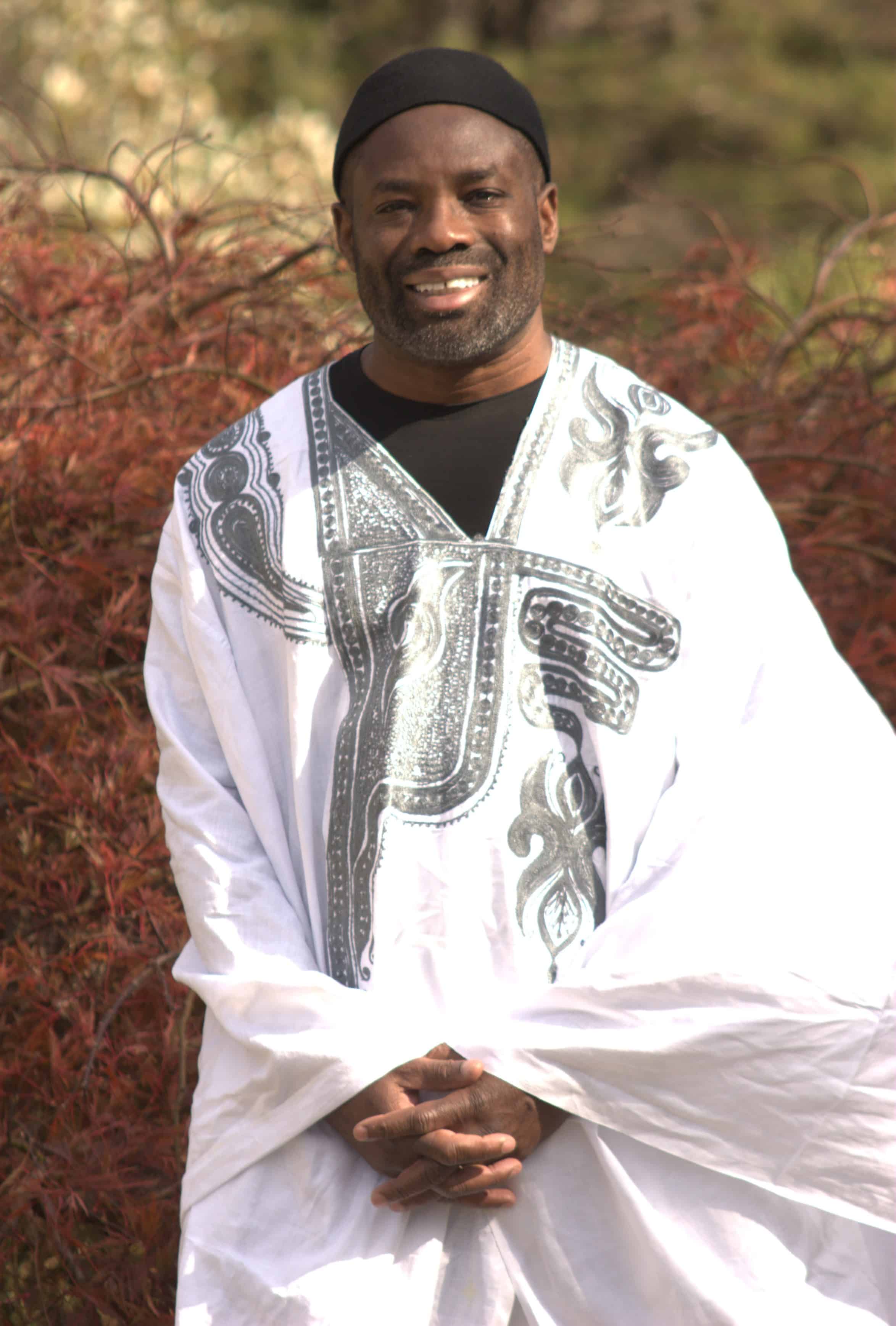
↓ 12 – Indian Dhoti
Men wear long sheets of white cloth called dhoti over a T-shirt or other comfy garment. It is a lightweight attire that is ideal for dry and hot weather. You can often see this costume on special occasions like weddings. But Indian people can wear it every day.
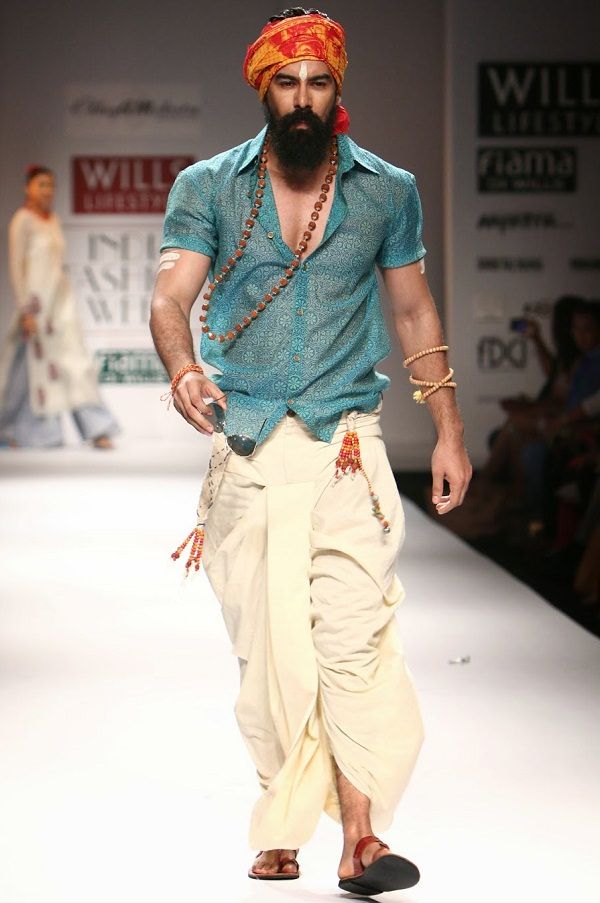
↓ 11 – Ukraine
Ukrainian clothing for men and boys consists of an embroidered shirt. They pair it with loose, decorative trousers tied at the waist with the bright cloth.
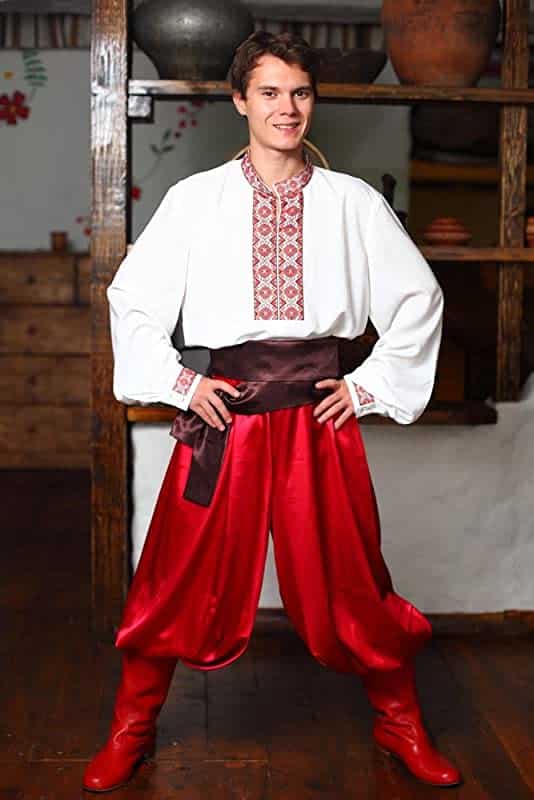
↓ 10 – Arabic Thawb
In most Arab countries, men wear thawb as their national dress. It is comprised of a long tunic with stiffened collar and sleeves. It is often embroidered as well.
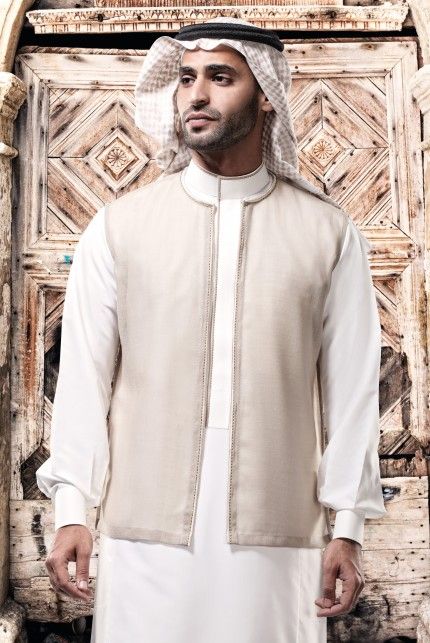
↓ 9 – Bhutanese Gho
Men in Bhutan are fond of wearing this attire even in urban places. This clothing is made from thick woolen fabric and is ideal for the country’s cold and windy atmosphere.
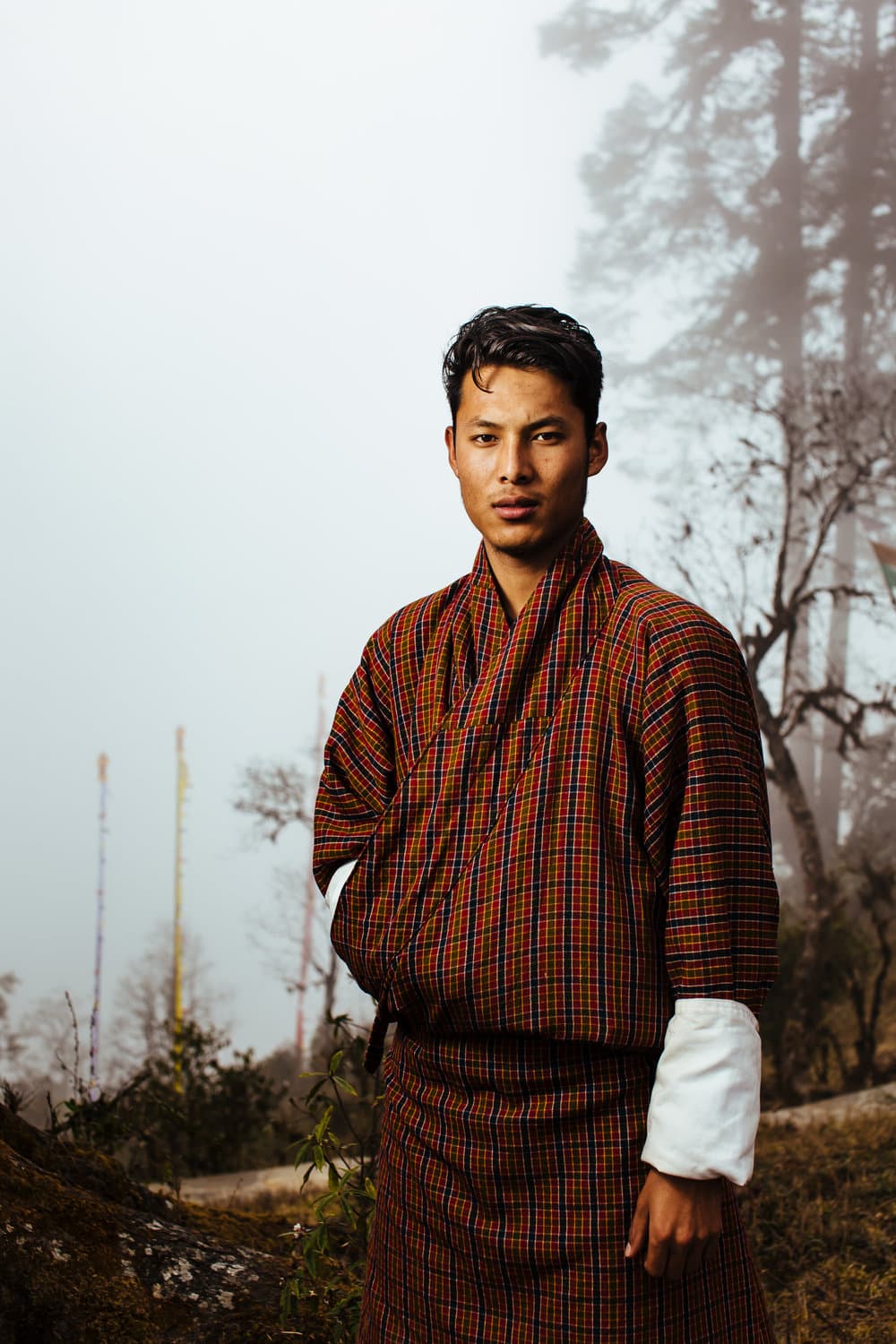
↓ 8 – The Faroe Islands
Sweater vests are back, and they are here to stay. The original design came from the mesmerizing Faroe Islands. The sweater used to be boring and functional in general. However, it’s been modernized now, making it a fashionable piece.
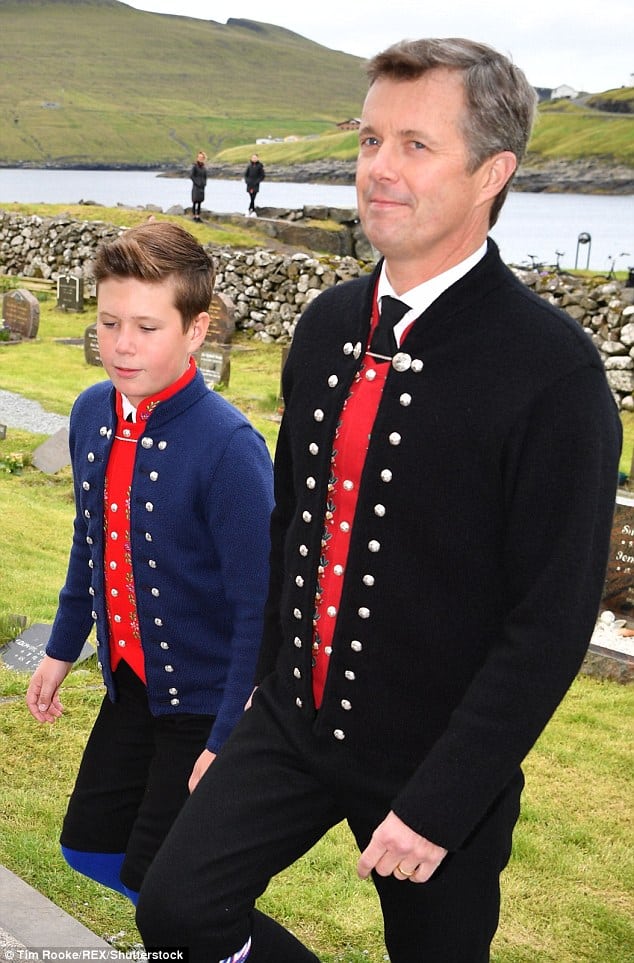
↓ 7 – Fashion In The United States
The country didn’t escape the wave of modernization over the years. But some cultures in the USA still live up to their tradition. For one, the cowboy outfit is still in vogue. You can see men, women, boys, and girls wearing it everywhere. On top of that, flannels and knickerbockers are also a thing in the country.
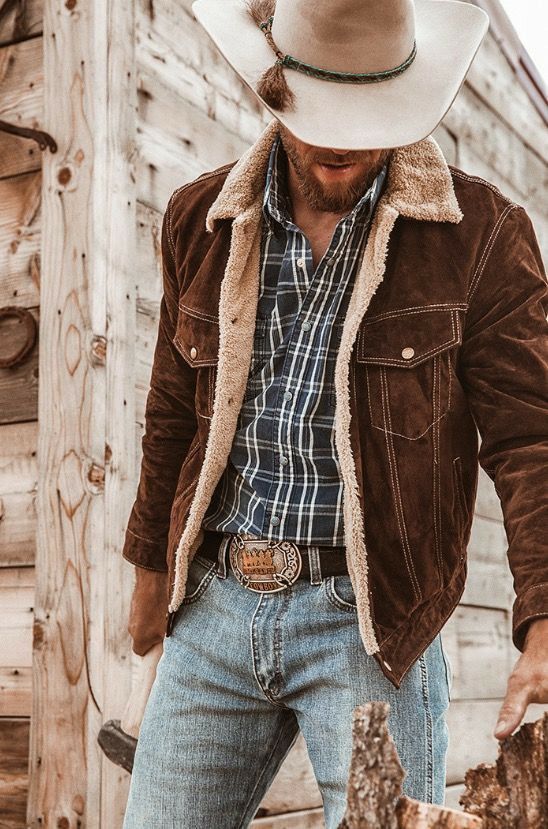
↓ 6 – Aboriginal Outfit Kenya
Most parts of Africa remain untouched as Africans are not that Westernized compared to other nationalities. For one, modern technology hasn’t yet impacted their lives that much. That is why they live a peaceful, carefree, and disconnected life. This has helped them preserve their culture, and the attire is proof of that. They have comfy one-piece dresses that are perfect for a hot climate. In some ways, African wear style has been modernized that you can see it in runways and urban areas.
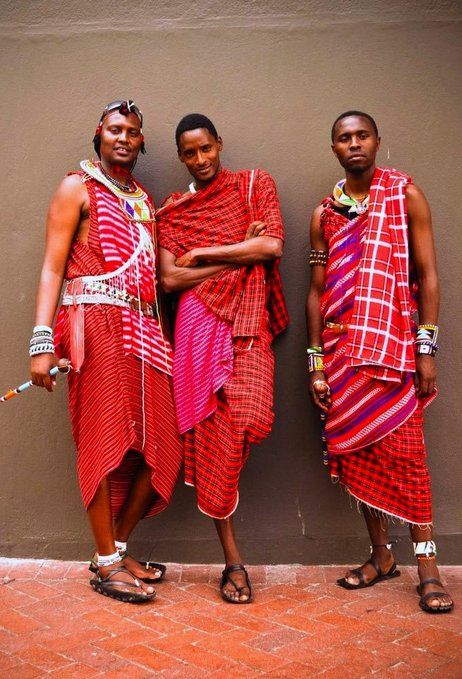
↓ 5 – Vietnamese Ao Dai
These people have a great sense of discipline about wearing neat attires. Among traditional clothes out there, Vietnamese Ao Dai is one of those you can wear to work. This resembles the Indonesian costume because of its uniform-like design.
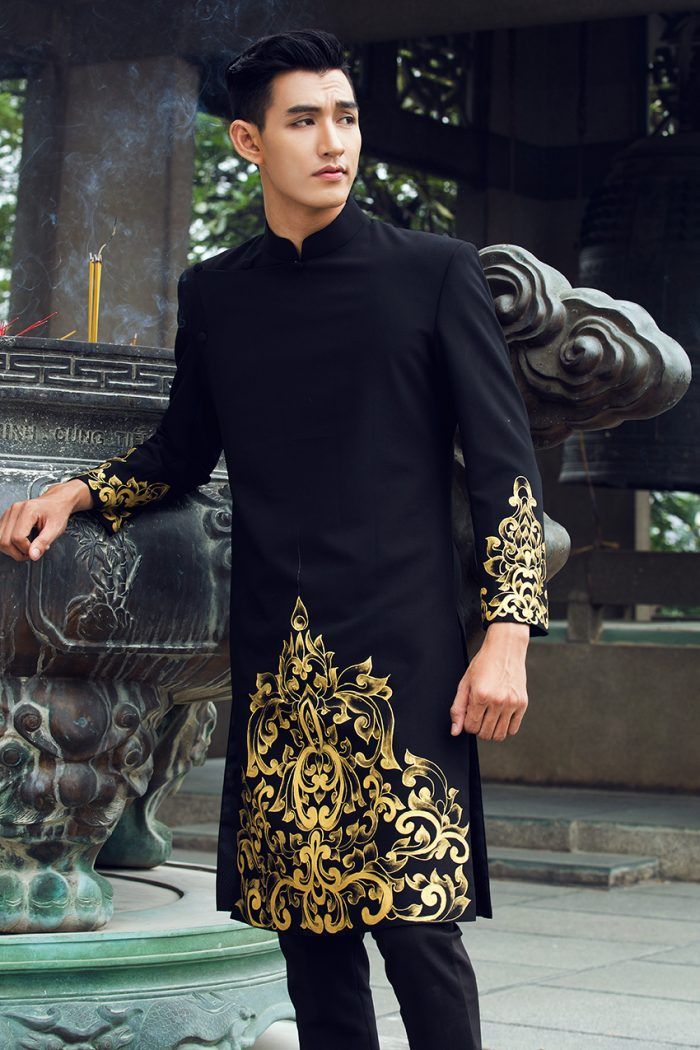
↓ 4 – Mongolian Deel
The people in this country are happy and warm-welcoming. To stand the cold weather of the place, the people dress up like Eskimos. They like to wear heavily padded clothing to keep themselves warm. For starters, you can see them in sweaters and jackets. As for footwear, padded boots are ideal for such a frigid environment. Their headgear is also essential as it keeps them from catching frostbite.
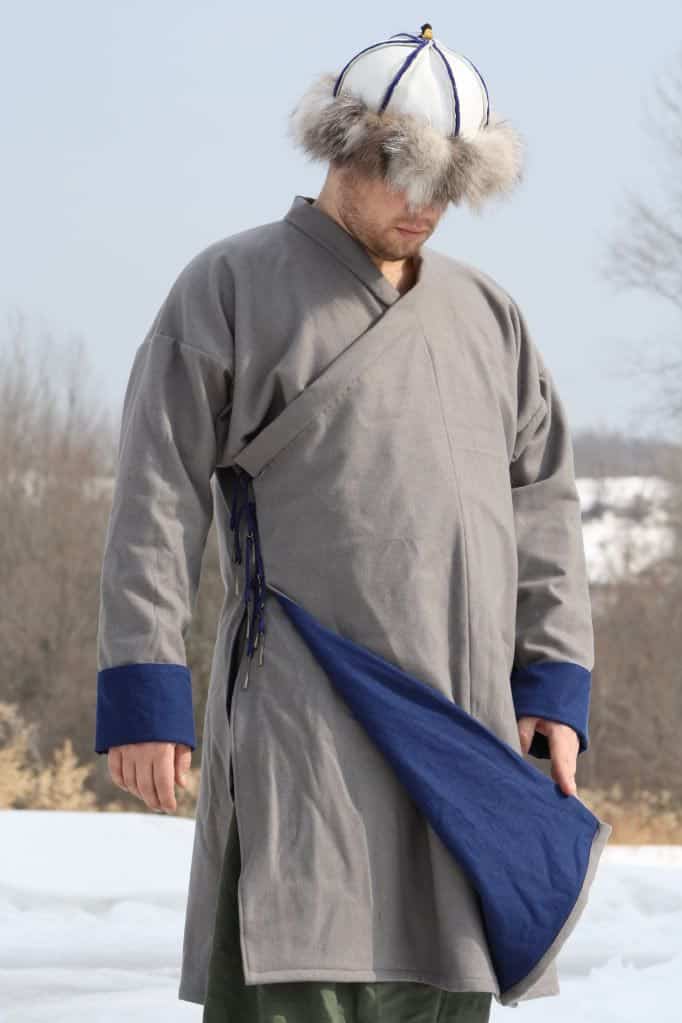
↓ 3 – Mediterranean Countries
Mediterranean countries have green lands and blue seas. If you are visiting the place, make sure to try their traditional attires on. You will feel like you are going back to the past because of the designs. People wear these clothes during wedding processions and religious festivals. For instance, this outfit would be ideal for such events.
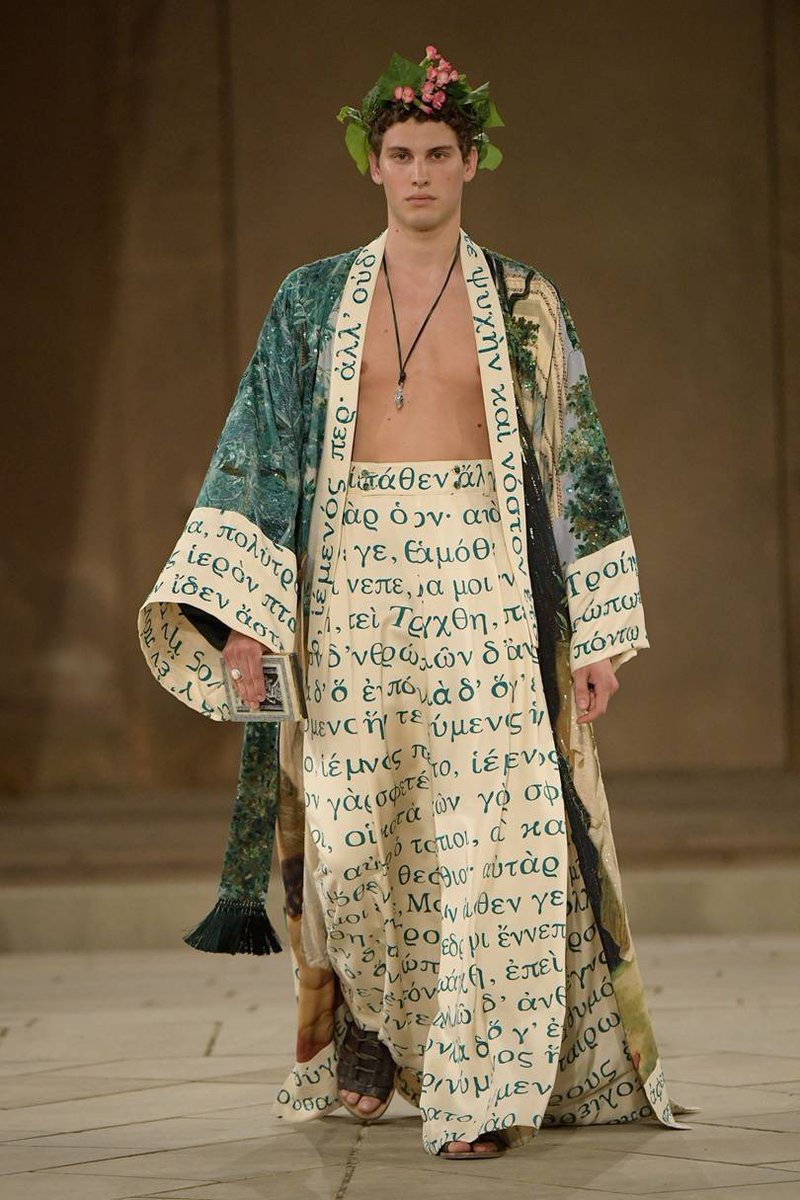
↓ 2 – The Sami Wear
People coined the term “Sami” or Saami for residents living in the colder parts of Sweden, Norway, Finland, and Russia. This attire has some similarities to Namibia’s in terms of color choices. As the rules for the Mongolian Deel, a woolen headgear is a must.
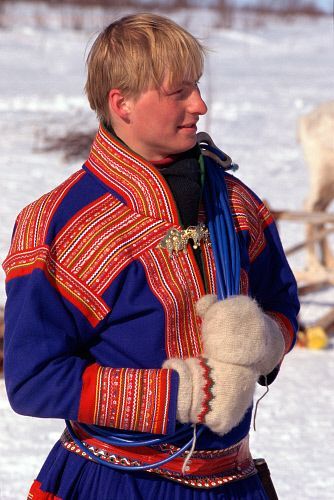
↓ 1 – Madagascar Lamba
Among many reasons, flora and fauna in the country are why you should visit the place. And the climate agrees with Madagascar’s traditional clothing. The outfit will keep you cool in the hot tropical climate. Some people in the US even dare to use this style when going to beaches.
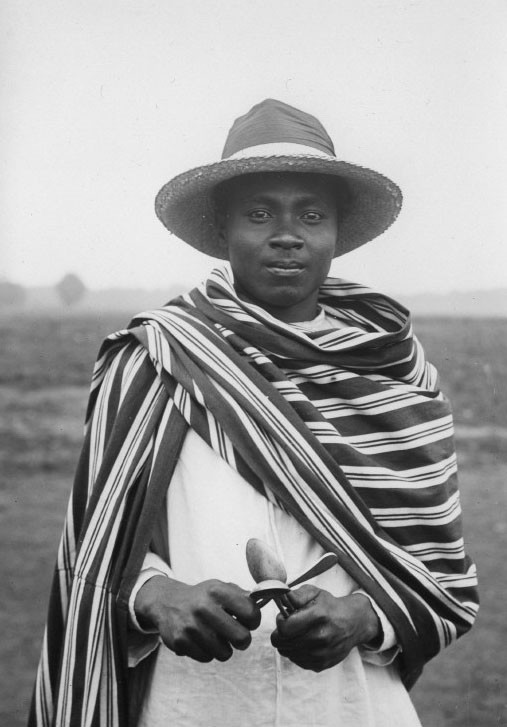
Frequently Asked Questions
Q. What are the best traditional outfits?
A. Each outfit is unique on its own. This is more like a subjective question. As I mentioned above, every traditional clothing has its own aesthetic. While you are free to try all of them, you can narrow down your options. As for me, I’d give my vote to Vietnamese Ao Dai and The Saree, apart from the Barong Tagalog of my country (Philippines). I’m just really in love with the silhouette of those two.
Q. What countries still wear traditional clothes?
A. All countries still wear these clothes. However, you may not see everyone doing it. For one, people in urban areas tend to wear modern outfits. But go to less westernized areas, and you’ll find ethnic groups in their costumes. While some only wear their national costumes at special events, most aboriginal people wear them daily.
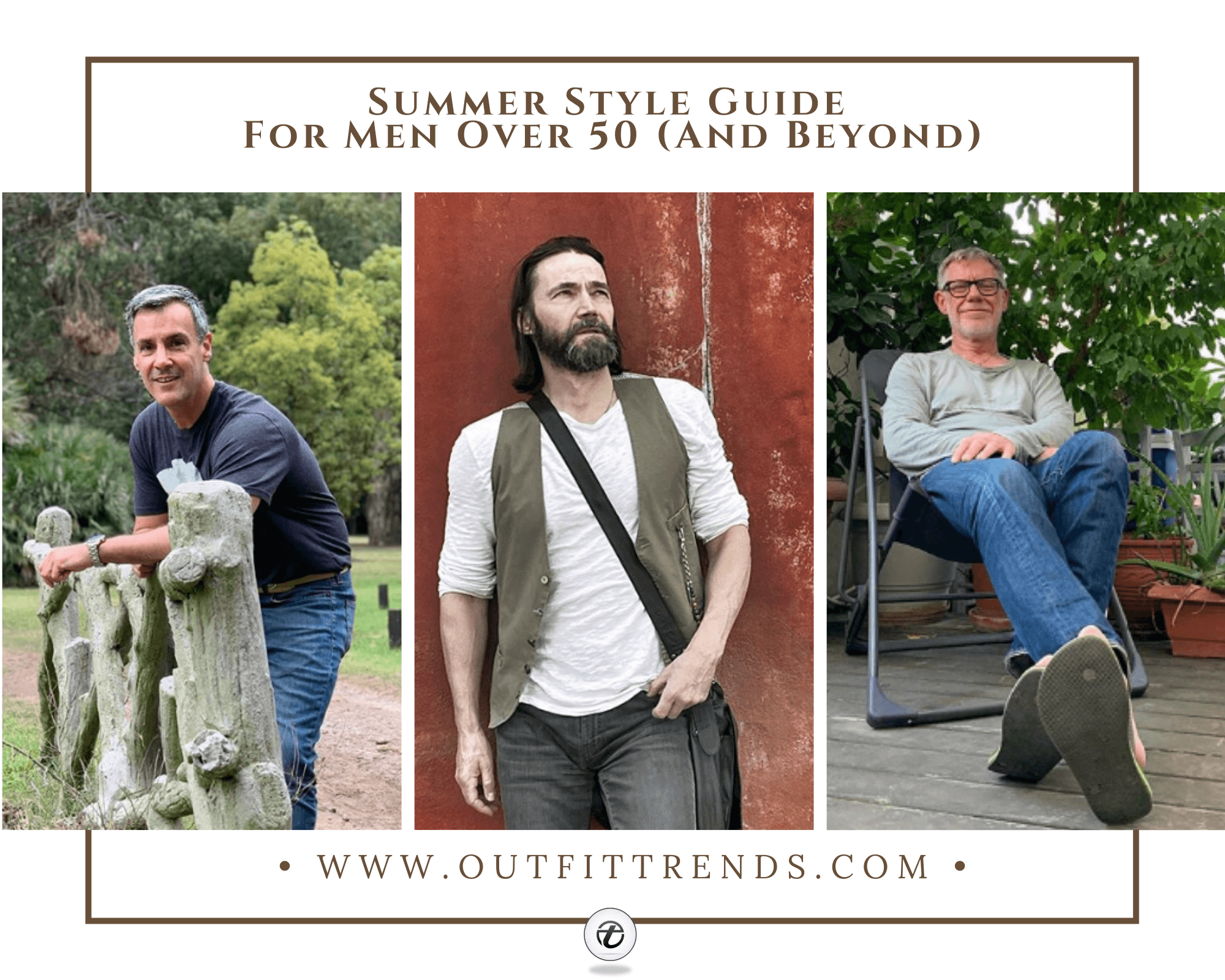
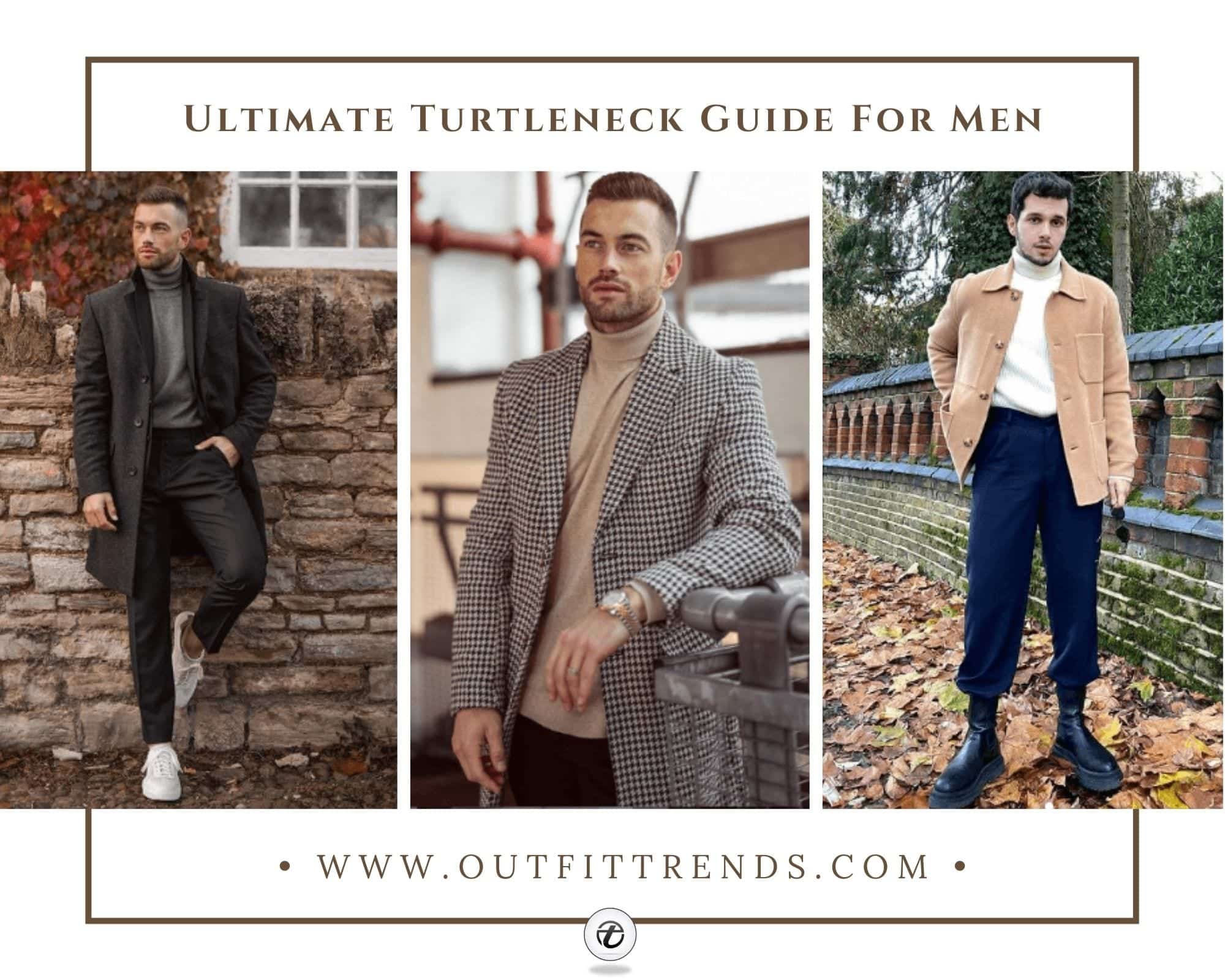
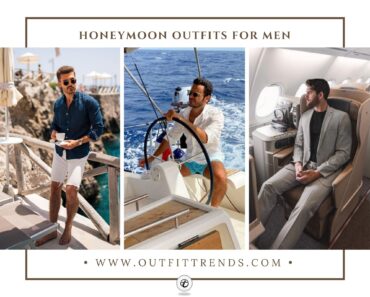
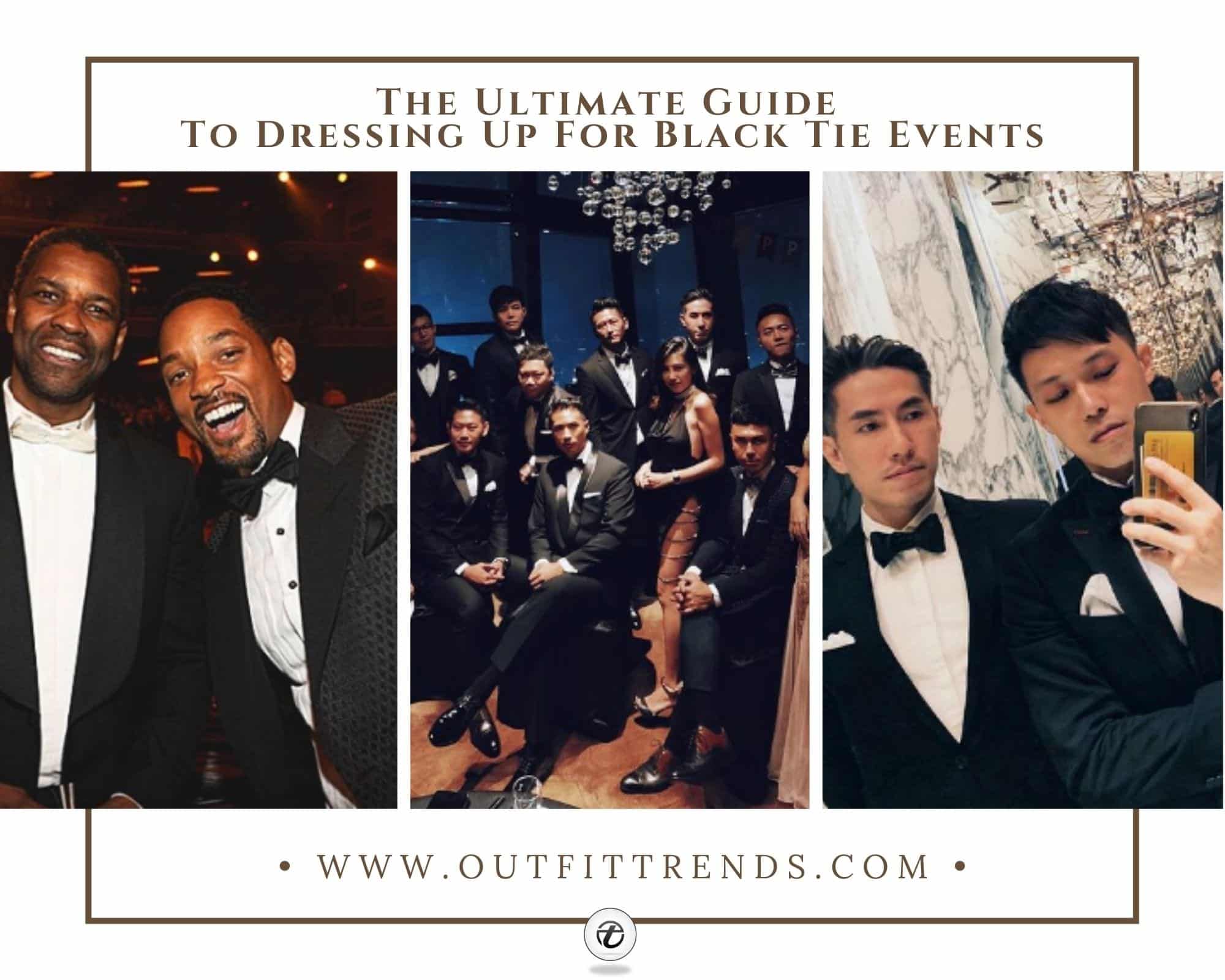






where the hell is the Georgian traditional outfit name “Chokha” it is the most beautiful and unique thing. Shame on you that you did not enclude this in that website and you mentioned Russia twice :((
Sorry to have hurt your feelings. We’ll update the article to include it.
Please follow us on Instagram too 🙂
Best Regards,
Olivia,
Content Manager at Outfit Trends.